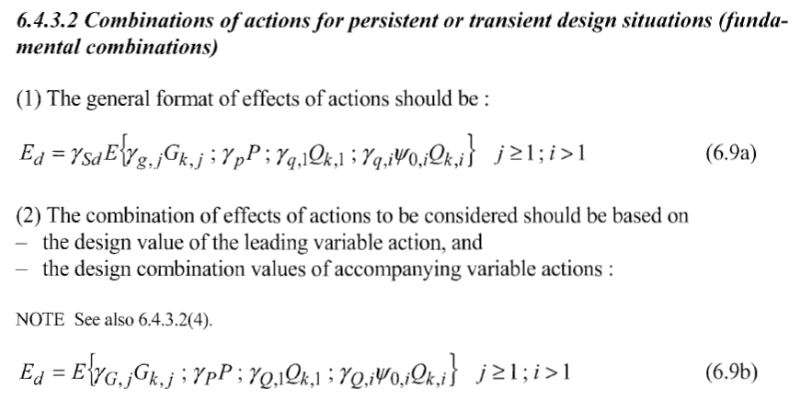Pretty Girl7
Civil/Environmental
- Nov 30, 2022
- 78
Whats the difference between 6.9a and 6.9b? (EuroCode0, Clause 6.4.3.2, page 47)
It states, 6.9a - for general format, and 6.9b for combination of effects.
But, I see both equations contain γi ψi Qki. So that means both equations can be used for combinations.
Why it says, one for general and other one for combinations. Is there any different use case?

It states, 6.9a - for general format, and 6.9b for combination of effects.
But, I see both equations contain γi ψi Qki. So that means both equations can be used for combinations.
Why it says, one for general and other one for combinations. Is there any different use case?

